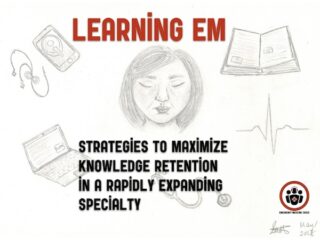EM Cases Main Episodes are round table in-depth discussions with 2 or more EM Cases guest experts, inherently peer reviewed, and edited for a podcast.
Ep 111 Effective Learning Strategies in Emergency Medicine
In this episode we explore the most effective learning strategies while debunking 5 myths in learning, and answer questions such as: How do we maximize our learning in the face of an ever-growing body of knowledge and procedure skill set so that we can become better doctors? What can we learn from the Dunning-Kruger effect? How do we best minimize distractions while we learn? How do we improve retrieval strength for easy recall? How can deliberate practice inform learning procedures? How can social learning improve our knowledge base? and many more...










